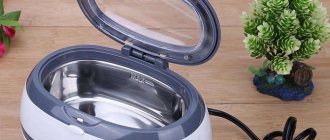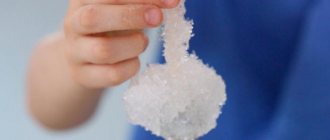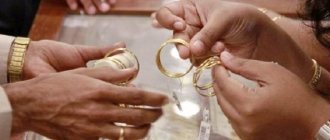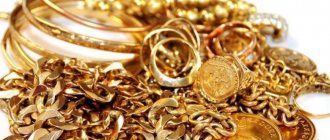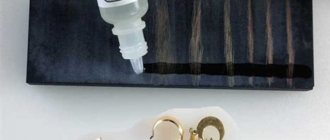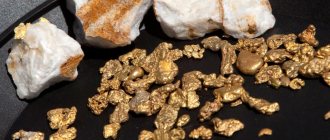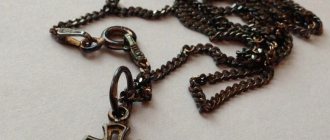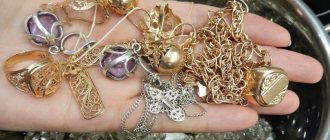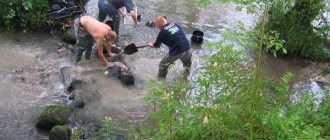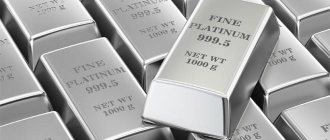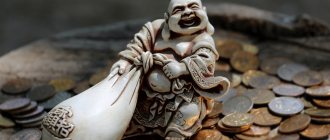The process of gold refining, that is, its purification, takes place in several stages: dissolution, filtration and precipitation of gold. And if you have gone through the two initial stages of precious metal purification, you will probably have a question about how to precipitate gold.
A gold object of a lower standard is dissolved in aqua regia, and then evaporated and filtered. The process is quite labor-intensive, but many people do it at home. But since it is not safe, do not forget about the safety rules.
And since at the end of the two stages gold is in dissolved form, in order to extract it from the solution, it is necessary to precipitate it. In chemical terms, this process is called reduction. Therefore, it is necessary to use substances that have reducing ability.
Gold precipitation
What it is
Ancient scientists admired gold and believed that it was the best metal of all - the king of metals. Therefore, when alchemists discovered a liquid capable of dissolving it, they called it aqua regia (royal water). In Russian at that time, liquid reagents were called vodka. This is where the name royal vodka comes from.
This is a strong solvent that reacts even with many inert metals (gold, platinum, ruthenium). It has an orange color and a pungent odor of nitrogen dioxide and chlorine.
How to clean white gold
The peculiarity of white gold is that it is plated with rhodium. This chemical protects the jewelry from the influence of external factors, and also gives it a moonlit glow.
Attention ! If the white metal begins to look yellow, this indicates that the rhodium layer has been damaged. In this case, cleaning will not save the situation. The only solution is to reapply the rhodium solution.
Mechanical methods are not suitable for cleaning white gold. The most gentle solution will be a soap solution. You can also use a mixture of ammonia and peroxide, soaking the product in it for a maximum of half an hour.
What does it consist of?
The royal reagent suitable for dissolving gold consists of a mixture of nitric and hydrochloric acids in a ratio of 1:3. Reagents with mass concentrations of 68% and 35%, respectively, are used.
When the components are combined, highly active substances are formed: nitrogen dioxide, chlorine and nitrosyl chloride:
НNO3 + 3НCl = Сl2 + NOСl + 2Н2О 2NOCl = 2NO + Сl2 2NO + О2 = 2NO2
How to clean matte gold
The matte texture gives the product a stylish appearance, but it is rather difficult to clean. When using hard abrasives, the matte finish can be easily removed.
Let us remind you that jewelry is given a matte finish using a special polishing method. Therefore, it is recommended to clean such products only with delicate methods, limiting yourself to removing visible plaque.
Recipe
For basic cleaning, it is enough to soak matte products for 2-3 hours in a 25% ammonia solution. You can also use salt or soda, leaving the product in the solution for 4 hours.
How to make your own aqua regia
To prepare aqua regia, combine 3 parts hydrochloric acid with 1 part nitric acid. It is necessary to mix the components only before use, since during storage, volatile products evaporate, reducing the activity of the solvent.
Dissolution of gold is also possible in hydrochloric acid, but the reaction rate is low. Nitrogen acts as a reaction catalyst. Therefore, you should first pour HCl into a glass container and place gold-containing objects in it. And only now gradually add nitrogen.
It is important not to overfill the nitrogen, as this will complicate the process of Au precipitation from the solution.
Addition
After experiments and subsequent writing of the article, two spots of gold remained: one purple on a piece of porcelain, the other purple and brown on the evaporation cup. When I prepared aqua regia - for a completely different experiment, I decided to dissolve these stains. It turned out that the first (purple) stain on the porcelain fragment dissolved quickly and without a residue. But the spot in the evaporation cup behaved strangely: the “purple component” dissolved, but the “dark brown” component remained.
There was no doubt: the remaining dark brown substance was not gold, but charred organic matter. When I poured the aqua regia from the cup, it came off easily from the surface of the porcelain with a rag. The fact is that the gilding on the cups contains an organic binder (rosin, in my opinion), and under the influence of the mixture of hydrochloric acid and hydrogen peroxide, the binder went into solution. Later - when the chlorine evaporated from the solution or reacted with water - it was this organic matter that began to gradually restore gold from chloroauric acid (and not the hypothetical dust and cat hair).
I strongly calcined a drop of solution on a piece of porcelain in a flame: all the organic matter burned away, leaving only purple particles of gold, which then dissolved in aqua regia. I heated the solution in the evaporation cup with a flame carefully, since contact with the flame could easily crack it. As a result, the organic matter was charred, but did not burn. At the bottom of the cup there were purple particles of gold and dark brown particles of charred organic matter. The first ones dissolved easily in aqua regia, the second ones did not.
Gold, hydrochloric acid and nitric acid. Gold, hydrochloric acid and nitric acid
In the experiment before last, we dissolved gold (gilding) using a mixture of concentrated hydrochloric acid and perhydrol, now we will try to dissolve gold in the “classical” way - using aqua regia. Let me remind you that aqua regia is a mixture of 3 parts concentrated hydrochloric acid and 1 part concentrated nitric acid (by volume). The peculiarity of this mixture is that it dissolves both platinum and gold - unlike hydrochloric and nitric acid taken separately.
For clarity, I took two pieces of porcelain with gilding at once - a broken handle of a cup and a fragment of a cup with a gilded stripe. I placed the pen in a glass and added about 20 ml of concentrated hydrochloric acid. He waited: of course, there were no signs of a reaction - the gilding remained intact. The second fragment of porcelain with gilding was poured with concentrated nitric acid - also no reaction.
I poured some of the nitric acid from the glass with the fragment into a glass with hydrochloric acid and a gold-plated handle (trying to maintain a ratio of 3 to 1, i.e. about 7 ml of HNO3). At first there were no visible changes, I mixed it - also without a visible effect. And only after a few minutes, gas began to be released in one area of the gilding, and the gilding itself in this place disappeared, exposing white porcelain. Gradually, the part of the handle that was immersed in the acid mixture turned white: the gold plating dissolved. Above the acid level, the gilding remained as if nothing had happened.
He took the handle of the cup out of the aqua regia, rinsed it, turned it over, and again immersed it in the acid mixture (so that the area with the surviving gilding was now in the aqua regia). The gold soon dissolved - with the exception of the middle section of the handle, which did not get into the acid, neither in the first nor in the second case. He took out the pen again, knocked off the area where the gilding was preserved, and immersed it in aqua regia. The gold coating soon dissolved.
Au + 4HCl + HNO3 = H[AuCl4] + NO + 2H2O
Aqua regia turned yellow, but this color is not due to the yellow chloroauric acid dissolved in it, but to nitrogen oxides, which (among other things) are formed as a result of the reaction between hydrochloric and nitric acid - this color is characteristic of aqua regia.
A little philology. In English this mixture of acids is called " aqua regia"
" - from the Latin "
royal water
" or "
king's water
" - "royal water", in Ukrainian it is called "
Tsar's Water
Tsar's Vodka
was also used before .
Initially, the name of the mixture of hydrochloric and nitric acids in the Ukrainian (and Russian) language used the adjective “royal” - according to a long-standing alchemical tradition. But at the end of the 18th century. the word “royal” was replaced with “royal”. I think it is clear that the reason for this lies outside the scientific plane.
| Gold, hydrochloric acid and nitric acid |
Step-by-step instructions on how to dissolve gold in aqua regia at home
Precautionary measures
During the reaction, toxic gases (NOCl, Cl2, NO, NO2) are released, which can lead to pulmonary edema and death. All work must be carried out outdoors or in laboratories with a good exhaust ventilation system. Use a respirator and protect your body and eyes from contact with caustic reagents. Actions must be as careful as possible to eliminate the risk of reagent spills.
Gold preparation
Gold-containing items must be cleared of plastic before dissolution. Other impurities can be removed with nitric acid.
Uncleaned parts quickly contaminate the aqua regia and complicate the gold extraction process. This is why pre-cleaning is carried out.
After cleaning mechanically and with nitrogen, the remaining metals in the container should be filled with HCl. A noticeable reaction will begin, indicating that the remaining impurities have dissolved. After the reaction stops, drain the reagent and add a new portion of HCl.
Next, heat the mixture and gradually add nitric acid. It doesn't have to be completely spent. If the dissolution of gold has stopped, stop adding HNO3 and leave the heated composition for 30 minutes.
Filtration of the solution
After standing, we clean the solution through filter paper and again leave to stand for 20-30 minutes. Most of the volatile components will evaporate and evaporation will take less time.
Then you should add sulfuric acid in a volume of 5 ml per 100 ml of solution and begin to evaporate the aqua regia. The reagent will precipitate the remaining silver and lead, and will also speed up the removal of HNO3.
The solution should be evaporated carefully, heating slowly, but not boiling. When it becomes syrupy, add more hydrochloric acid and evaporate further.
This cycle can be repeated 2-3 times.
Then add HCl again to the original consistency, and dilute the resulting mixture with water in a 1:1 ratio. Keep the solution in a cool place for 24 hours. The remaining silver chloride will settle to the bottom.
Now carefully filter the solution to get rid of sediment and turbidity.
Gold precipitation
The following reagents can be used to isolate gold from a liquid:
- hydrazine (must be added drop by drop, otherwise it may explode);
- inkstone;
- sodium pyrosulfite;
- oxalic acid;
- sodium sulfite;
- hydrogen peroxide.
The simplest, safest and cheapest method is precipitation using iron sulfate. The chemical reaction equation is:
HAuCl4 + 3FeSO4 = Fe2 (SO4) 3 + FeCl3 + HCl + Au
We take vitriol in the amount of 14 g per 1 g of expected gold. Dissolution is carried out in warm water with the addition of hydrochloric acid. Then we pour it all into a flask with gold.
If the liquid does not become cloudy, but hisses, then there is too much HNO3 left in it. In this case, you should add iron sulfate in small portions until the hissing stops.
The resulting mixture is kept for 24 hours to allow precipitation to complete.
The next day, the solution must be filtered. The resulting brown precipitate is gold sand. We wash it with HCl. This will remove any remaining iron. Then you can rinse with ammonia to remove copper impurities. Finally, rinse with hot water several times.
The gold can now be melted and poured into a mold to make an ingot or into cold water to form gold granules.
This method allows you to obtain 999 fine gold.
Filtering the solution
Now it's time to filter the solution. For now, you can use a fairly coarse filter, and finer cleaning will happen later.
The resulting precipitate
It should be understood that aqua regia itself is a rather unstable substance: hydrochloric and nitric acids react with each other. Initially transparent, it soon turns orange-brownish due to nitrogen oxides, and then completely loses its oxidizing properties. The following reactions occur:
HNO3 + 3 HCl = 2Cl + NOCl + 2H2O
NOCl = NO + Cl
2NO + O2 = 2NO2
In addition, both acids simply evaporate. In this regard, it is advisable to keep the solution for about a day at this stage, as this will facilitate the further process of evaporation of nitric acid.
When evaporating, a small amount of sulfuric acid should be added to the solution, no more than 50 ml per liter. This will help precipitate residual amounts of lead and silver chloride (which, although slightly soluble, may be present in small quantities in the solution). In addition, the evaporation process will go faster.
Heating is done slowly and carefully. The solution is evaporated to the consistency of syrup (no more!). It is impossible to bring it to a boil, since in this case it cannot be ruled out that gold will precipitate in the form of a metallic precipitate already at this stage.
Then add hydrochloric acid to the solution to the original volume and evaporate again to a syrupy state. The process is repeated three times. After this, the liquid is diluted 2 times with cold water and left in the cold for a day. In this case, the remaining silver chloride should precipitate: it dissolves only in concentrated hydrochloric acid, and the higher the temperature, the better. Accordingly, as the concentration and temperature drop, AgCl precipitates. Now filtering is carried out “in full”: no turbidity should remain in the solution.
How to prevent plaque from appearing on gold
Gold does not like bright sun and moisture, as well as various cosmetics and chemicals.
Top 4 tips on how to prevent gold raids:
- Keep jewelry away from ultraviolet light;
- Remove jewelry before household and physical activities, as well as before manicure;
- Wipe the products dry if they get wet;
- Protect rings and other jewelry from interaction with cosmetics, perfumes, and other liquid and bulk substances.
How to clean gold jewelry with stones
Precious stones add a special chic to products, but complicate the cleaning process. Most of the dust and dirt settles in the fastenings between the stones and inserts, and getting to these places is problematic.
Before cleaning products with stones, you should carefully study the features of caring for minerals. For example, opal is easily scratched by tooth powder, soda or salt, while topaz and garnet are sensitive to high temperatures. At the same time, pearls do not like acids and alkalis, so cleaning with vinegar/detergents is contraindicated.
Products with gems are not recommended to be placed in hot water, especially for a long time. It is better to wipe stones and frames with alcohol-containing compounds (without dyes). When cleaning, do not rub the product too intensely so as not to loosen the fastenings of the stones.
